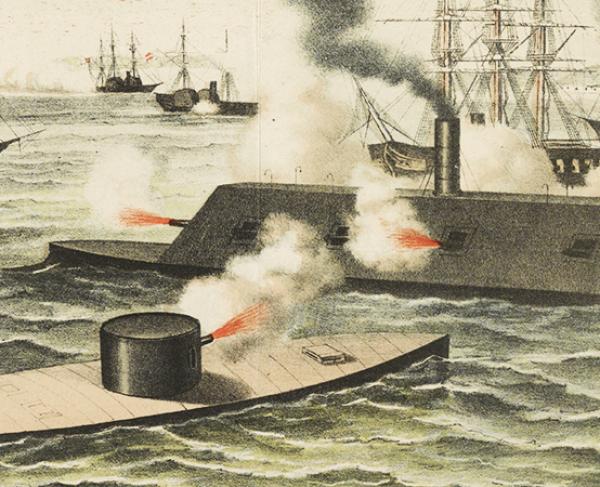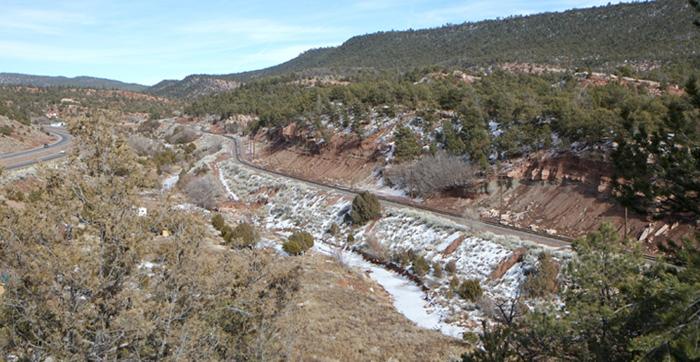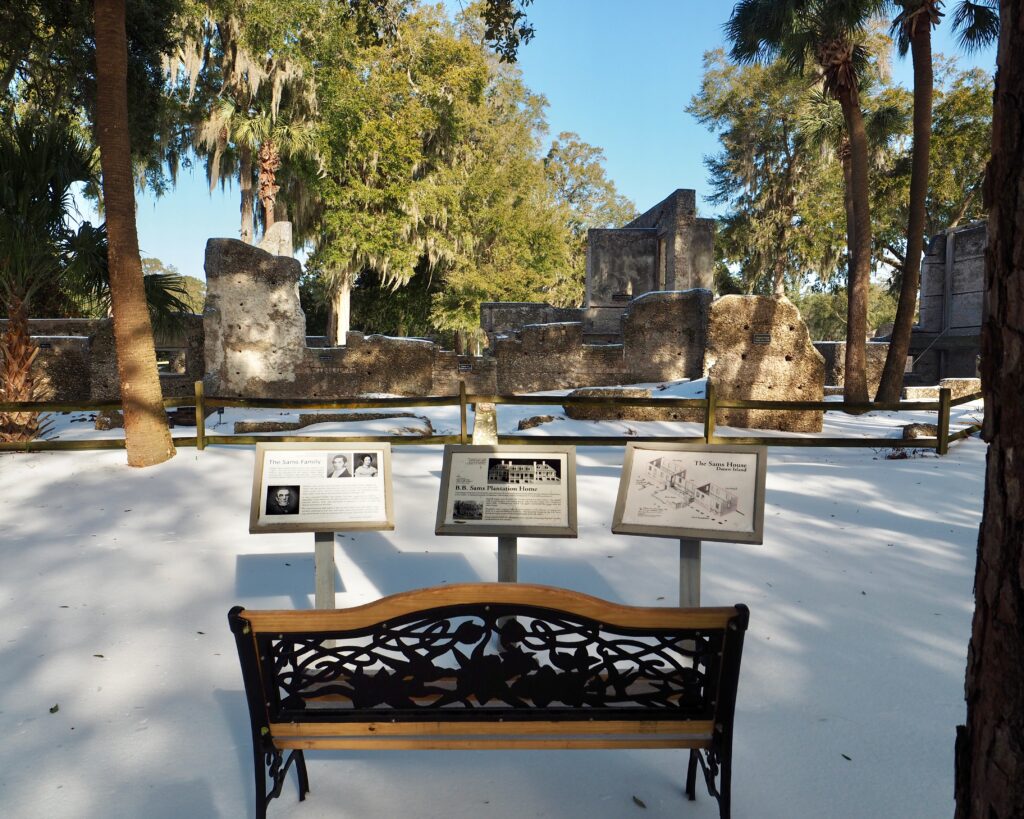3 Images, 2 Moments, 1 Memory
Three Images of History

The CSS Virginia and USS Monitor were not the first ironclad warships but the first ironclads to battle against one another—image from the American Battlefield Trust.
View of Apache Canyon, where much of the early fighting occurred during the Battle of Glorieta Pass. Rob Shenk


A Southern relic wrapped in an impossible winter. Photo by Bill Riski, 22 Jan 2025
Two Moments in History
Moment 1—Battle of Hampton Roads
Fought on March 8-9, 1862, in Hampton Roads, Virginia.
The first battle between ironclad warships was USS Monitor (Union) and CSS Virginia (Confederate). The engagement resulted in a tactical draw but a strategic Union victory.
It marked a significant turning point in naval warfare, highlighting the obsolescence of wooden warships.
Meanwhile, 2,000 miles west …
Moment 2— Battle of Glorieta Pass
Fought from March 26-28, 1862, near Santa Fe, New Mexico Territory.
It was probably the most unknown battle of our American Civil War.
Most battles occurred in lush environments like pine forests, marshes, and swamps near southern rivers. The Battle of Glorieta Pass is notable for its unusual location and terrain compared to typical Civil War battlefields.
Glorieta Pass features a dry, baked canyon, unlike the typical green and wet battlegrounds. This canyon winds through the Sangre de Cristo Mountains in New Mexico, adding to its uniqueness.
Colonel Edward R. S. Canby led Union forces, while Confederate forces were under Henry H. Sibley.
It was the decisive battle of the Civil War in the New Mexico Territory. The battle ended in a strategic Union victory, halting Confederate expansion in the Southwest.
One Memory
“At length my Dear Marquis I am become a private citizen on the banks of the Potomac, & under the shadow of my own Vine & my own Fig tree, free from the bustle of a camp & the busy scenes of public life…I am not only retired from all public employments, but I am retireing within myself; & shall be able to view the solitary walk, & tread the paths of private life with heartfelt satisfaction—Envious of none, I am determined to be pleased with all. & this my dear friend, being the order for my march, I will move gently down the stream of life, until I sleep with my Fathers.“
George Washington
February 1, 1784
This quote comes from George Washington’s letter to Lafayette shortly after retiring from his military service. It beautifully captures Washington’s deep affection for Lafayette, addressing him as “my Dear Marquis,” and shares his contentment with returning to private life after years of public service. Soon after, the Marquis returned to America to visit Washington in 1784.
December 1, 1784, would be the last time the two would see each other. A short time later, Washington would become our first President, serving for eight years (1789 – 1797). He died in 1799 at age 67.
The Marquis lived to 1834, dying at 76. Washington was 25 years senior to the Marquis. Many historians describe their relationship as father and son. The many letters between the two reaffirm this. Their relationship had been forged in fire during many battles in the American Revolution.
Sources
American Battlefield Trust
Exploring History on Medium by Grant Piper
The George Washington Presidential Library at Mount Vernon

